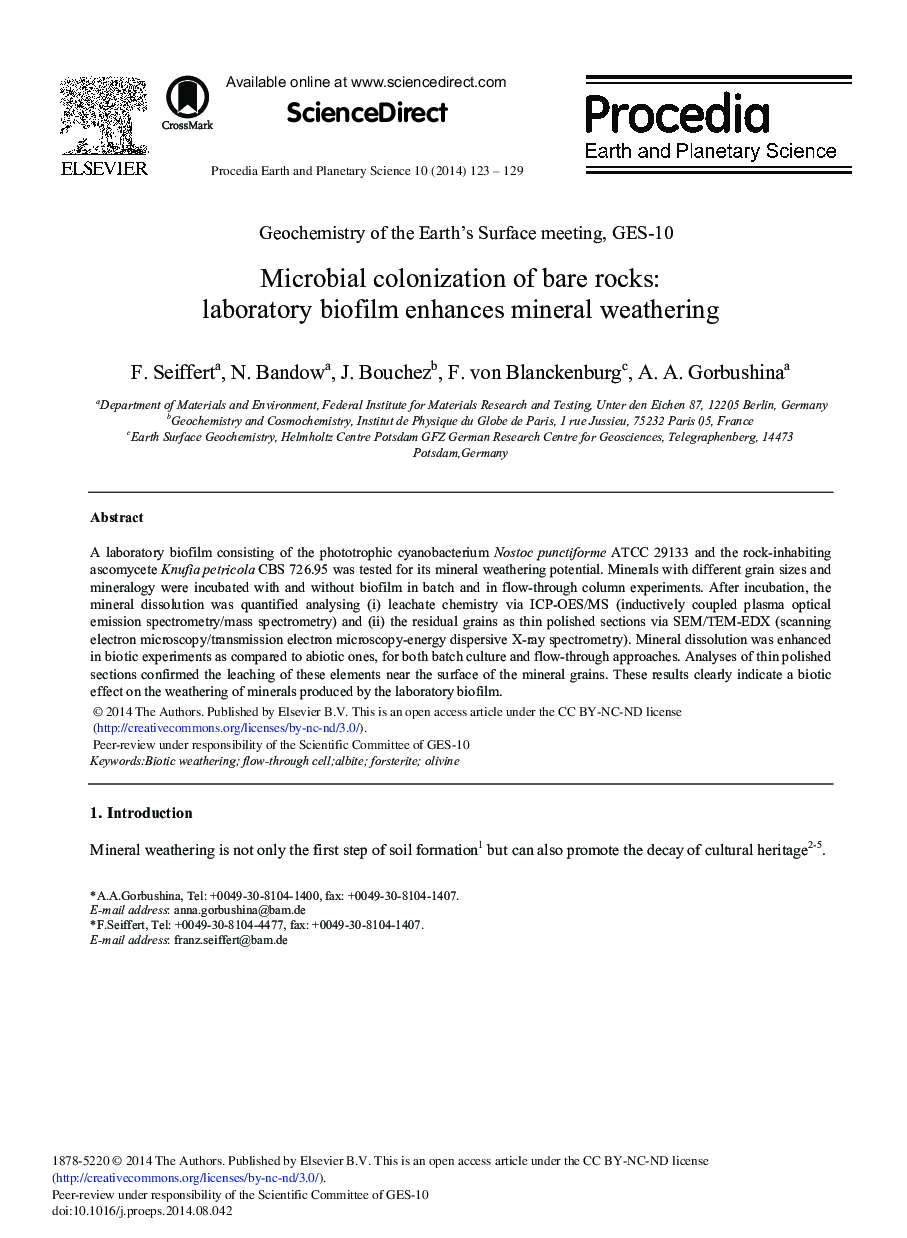| Article ID | Journal | Published Year | Pages | File Type |
|---|---|---|---|---|
| 4675032 | Procedia Earth and Planetary Science | 2014 | 7 Pages |
A laboratory biofilm consisting of the phototrophic cyanobacterium Nostoc punctiforme ATCC 29133 and the rock-inhabiting ascomycete Knufia petricola CBS 726.95 was tested for its mineral weathering potential. Minerals with different grain sizes and mineralogy were incubated with and without biofilm in batch and in flow-through column experiments. After incubation, the mineral dissolution was quantified analysing (i) leachate chemistry via ICP-OES/MS (inductively coupled plasma optical emission spectrometry/mass spectrometry) and (ii) the residual grains as thin polished sections via SEM/TEM-EDX (scanning electron microscopy/transmission electron microscopy-energy dispersive X-ray spectrometry). Mineral dissolution was enhanced in biotic experiments as compared to abiotic ones, for both batch culture and flow-through approaches. Analyses of thin polished sections confirmed the leaching of these elements near the surface of the mineral grains. These results clearly indicate a biotic effect on the weathering of minerals produced by the laboratory biofilm.
